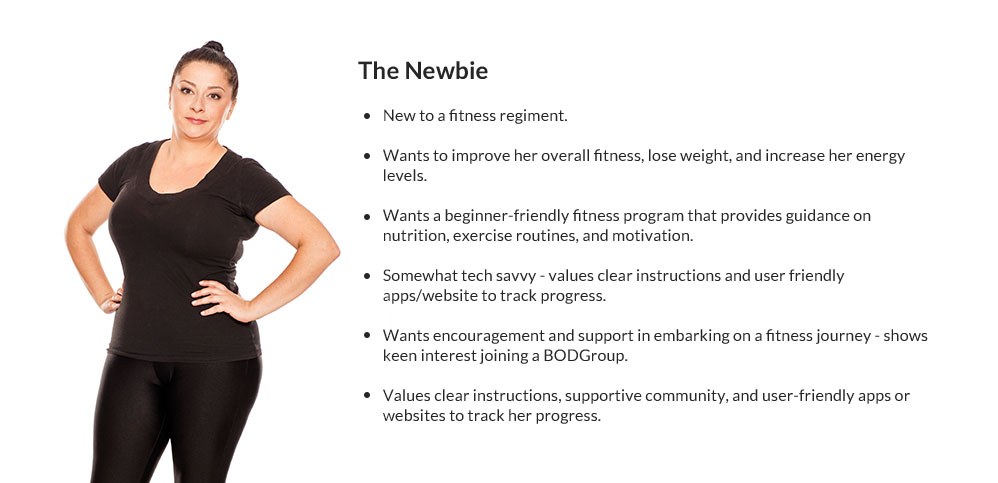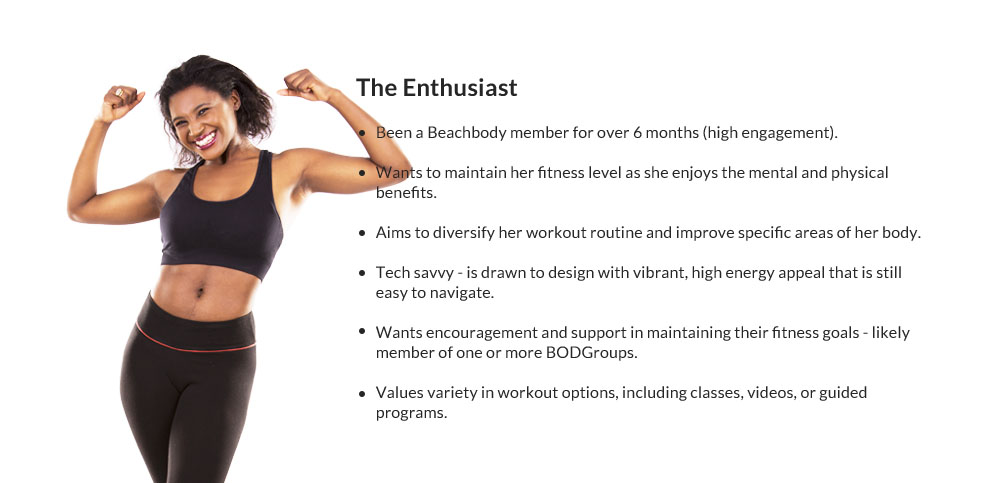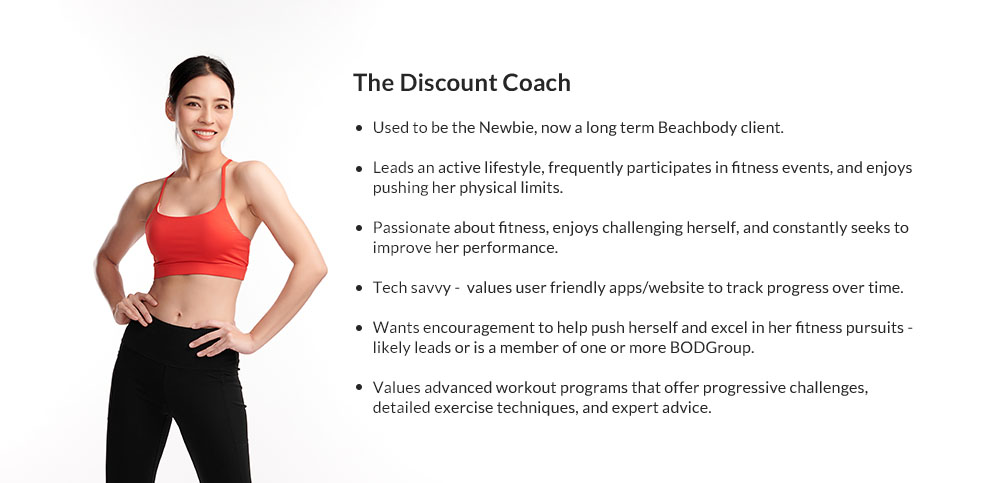Beachbody Gamification
A multi-platform gamification feature that makes reaching your fitness goals fun and engaging.
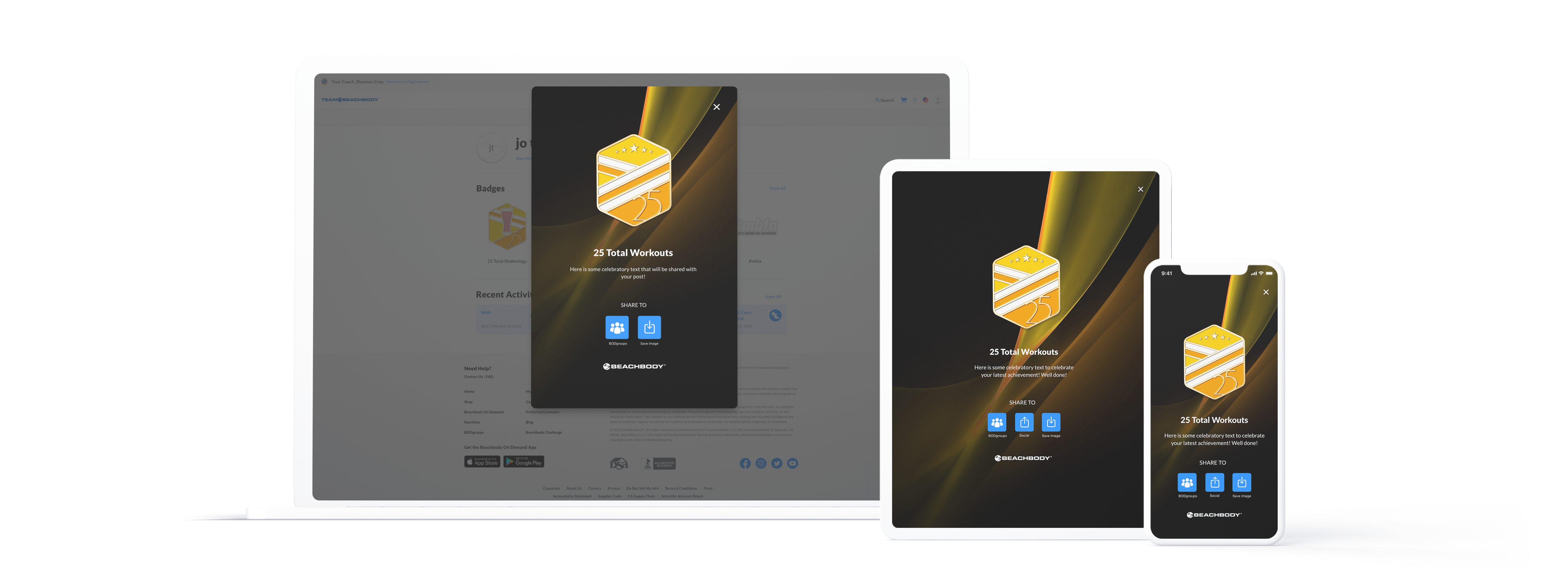
Overview
I was brought on at Beachbody in early 2021 to assist in implementing a feature that was to gamify the fitness experience for their users throughout their multi-platform product suite. The goal for the gamification is to encourage users to reach their fitness milestones and foster and supportive peer environment for them to work on their health.
Role
Research, Ideation, Wireframes, Interaction, UI Design
Team: Design Lead, 2 Product Designers, 1 Product Manager, Engineering
May 2021 - March 2022
The Problem
When I started at Beachbody, there was no system for awarding new and current users to motivate them along their fitness journeys. The lack of such a system had become a pain point since most users felt it would be more motivating and encouraging to continue with their workout or food/water intake goals. This feedback, in addition to every major competitor in the fitness space already having reward systems integrated into their products, the business need to implement a gamification feature arose and became a key priority for stakeholders.
The Solution
Beachbody Gamification is a engaging way of keeping fitness enthusiasts and neophytes motivated throughout their fitness journeys. It celebrates users reaching their goals and encourages them by displaying how far away from their next fitness milestone is.
Research
At the onset of this project, it was vital for me to begin to understand the psychology of how users engage with Gamification in general and why it becomes an essential factor in the decision to continue to use certain products.
I found through my research that Gamification primarily works because it triggers a real and powerful human response within users. The act of having a goal, reaching it, being rewarded for it, and then having a subsequent goal established once the last has been achieved creates an exciting and intriguing cycle that helps drive user engagement.
These experiences are often ALWAYS positive, leading to user engagement, loyalty, and higher revenue.
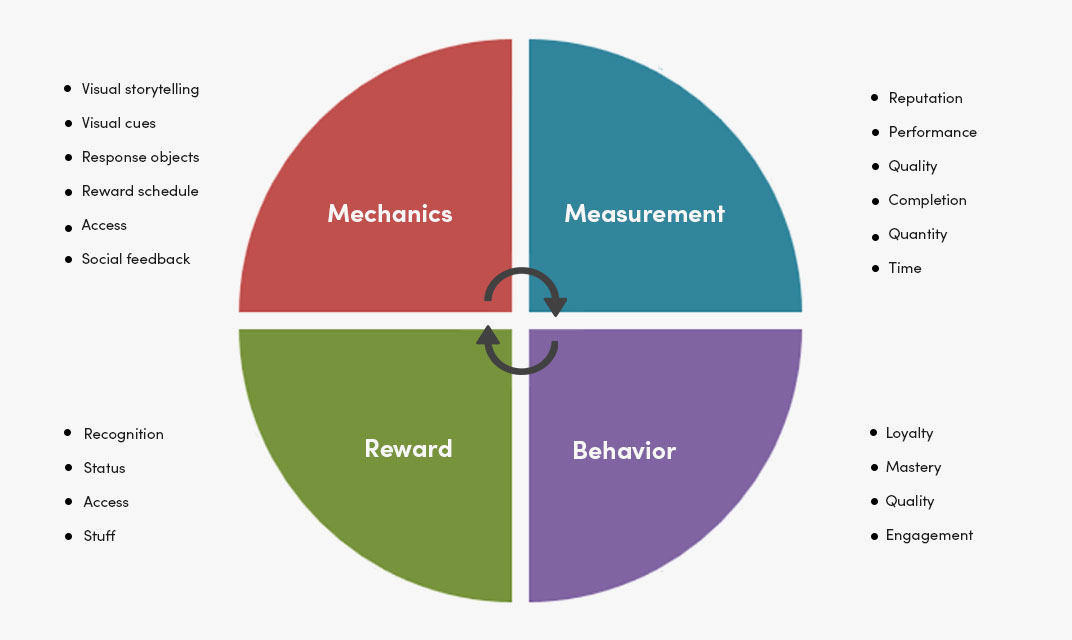
The question of how much Gamification should factor into a company’s business plan is clear. It turns out it’s not just a gimmick, with most of fortune 500 companies already having some established form of gaming/rewards system and 50% of startups integrating gaming elements into their overall strategy.
Understanding our users
Now that I had a bit more understanding of the business needs and requirements, I wanted to focus a bit more on the demographics and makeup of Beachbody’s users. With the assistance of the UX Lead I was able to gain more insight into users as well assess their wants, needs and motivations.
The majority of Beachbody users are women between 24-55 at 70%. Where as men between 25- 47 comprise 20%.
Prior to me coming on to this project, UX had also provided data from surveys conducted on users and whether or not they would benefit from or had any interest in a gamified experience integrated into the Beachbody product suite. This data, along with outlined in our user profiles, would further reinforce the need for a gamified feature from the user perspective.
Based on this research I was able to draw out a few key pain points:
- More motivation: Users reported that they often struggled with motivation and needed additional incentives to stick to their fitness routines.
- Competitive Nature: Many users expressed a desire for competition, challenges, and rewards as they found it motivating to compare their progress with others.
- Progress Tracking: Users desired a more visual and interactive way to track their progress and see tangible results of their efforts.
- Variety and Personalization: Users wanted a diverse range of workouts and the ability to customize their fitness experience based on their individual preferences and goals.
From this research I was able to get a better understanding of what Beachbody users were looking for from the prospects of a gamified experience to support their current and future fitness goals. I then decided to evaluate other fitness apps with gamified elements to identify successful features and user engagement strategies. This would in turn help determine what features that would be beneficial for our users.
Comparative Analysis
Now with a better understanding of the business implications and user needs for a gamified experience, I decided it’d be best to delve into how the top players were doing it justice. The following are highlights of my findings, which became the jump-off point for informing potential directions to take with the feature.
Nike Run Club
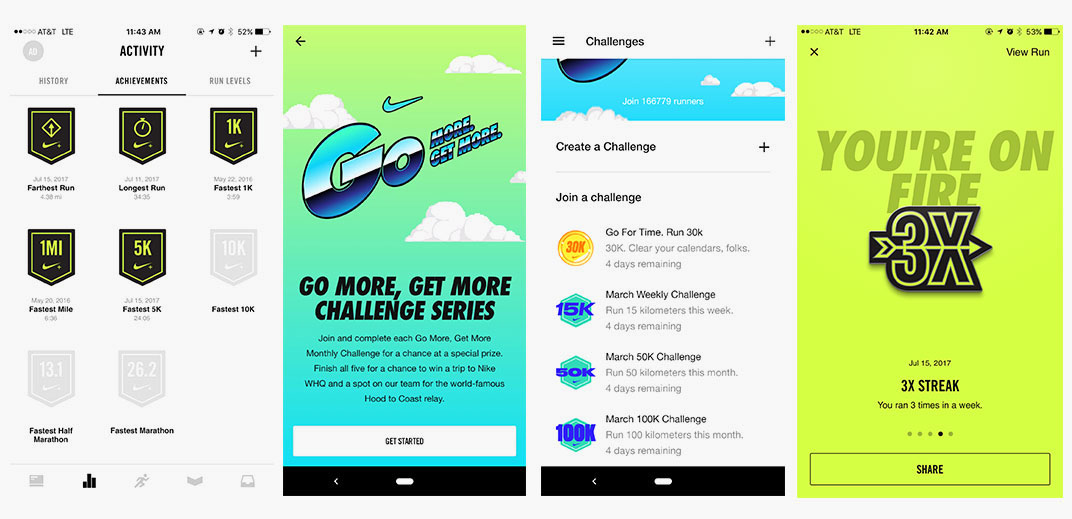
Nike’s running app, Nike Run Club is one of the world’s standout gamified products. It acheives this by tapping into a users natural competetive drive. It tracks running statistics and measures progress toward specific goals. It compells users to keep up their activity and beat their previous record with the next go around.
In addition to the encouragement, it also has the capacity to link a users social media channels so that they may boast or compete with friends. In Nike's case, this drives engagment by getting people to run, which ultimatley drives up their sales.
Duolingo
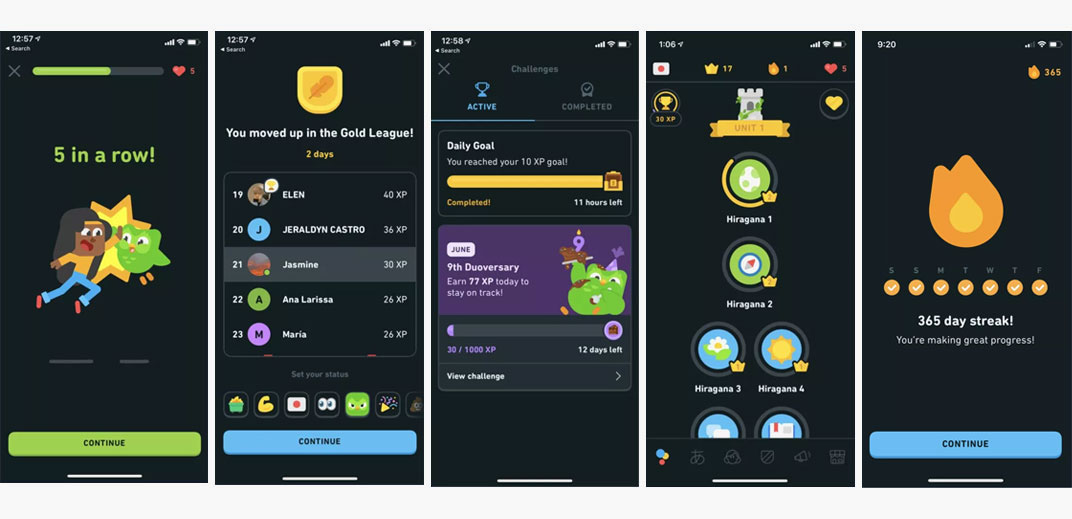
Gamiciation seems to work especially well when your content is dense and vast. So is the case for learning - say new language. Duolingo makes this fun and addictive by breaking lessons up into levels which you earn a badge for completing as well as leveling up.
The dashboard maps out the course with each acheivment along the way. There is clear navigation as to which 'levels' a user can advance to. The app also tracks streaks for daily engagment which also earns users points in case they get stuck or fail a level.
Apple Fitness

Apple differentiates itself in the fitness space as most of its gamified features are tied to its watch product. Users set daily fitness goals for themselves and further motivate them since every step is tracked and counted toward this goal. Visually, goals are tracked through the concept of rings - close all of your rings, reach your goal. This gives users more impetus to get up and move.
Apple also includes unique challenges and awards surrounding certain events, times of the year, or specific activities.
Key Findings
It was clear through thorough research that gamified experiences draw in users by appealing to their innate desire for achievement and recognition, in terms of integrating gamification into Beachbody's products required, the correct approach. The team felt that based on our research, specifically within the fitness sphere, a system of badges or medals would help drive the thrill of achievement. However, simply attaching badges to specific actions didn't seem like enough to keep users engaged long term.
Since having a more structured path to achievement is more familiar to users and can seem like a clear path to victory, the concern was that it might also leave some users frustrated with a lack of control. By using connected devices like Apple Watch, Peleton, Fitbit, and their respective apps, users are allowed more flexibility and autonomy by setting personal goals for themselves. These are daily goals and, if completed, count toward a streak. This keeps users engaged and motivated by trying to maintain their personal best and challenge themselves as they progress.
Now that the team had a grasp on how to provide users with a gratifying and engaging gamified experience, we began to expand those established concepts through ideation.
Ideation
Taking into account the research findings, the team began to ideate on elements that we deemed valuable for Beachbody users.
- Achievements and Badges: Introduce a system of achievements and badges that reward users for completing milestones, reaching goals, and maintaining consistent workout routines. These achievements could be shared on social media platforms to foster competition and inspire others.
- Challenges and Leaderboards: Implement time-bound challenges or competitions that encourage users to compete against one another. Leaderboards can display top performers and encourage healthy competition, motivating users to push themselves further.
- Rewards and Incentives: Provide virtual rewards such as badges, virtual currency, or exclusive workout content for consistent app usage, completing challenges, or reaching specific milestones.
- Interactive Progress Tracking: Enhance the visual representation of progress by integrating charts, graphs, and interactive visuals that display workout history, calorie burn, strength gains, and overall improvements. Users can compare their progress against personal records or benchmark against the community.
- Social Integration: Enable users to connect with friends, share achievements (through various social media channels and via BODGroups), and challenge each other to workouts or challenges. This social aspect encourages community building and provides additional motivation and accountability.
The team then worked crossed functionally with product, engineering and other stakeholders to determine how potential features would factor into the given timeline, budget and resource constraints for MVP. It was ultimately determined that certain features were “nice to have” and that other’s would be essential for the feature launch, namely achievements/badges, sharing and possibly challenges (streaks).
Access Points
Before we began delving into any wireframing, It was essential to consider how the feature would factor into the suite of Beachbody products. I worked closely with product management and the head of UX to map out the current flows for a workout, meal, and shake tracking and identify where the feature would live and at what point users could earn badges.

After much debate, stakeholders decided that a user's earned badge repository would only be accessed through their profile. Once achieving a specific workout or tracking milestone, they would be awarded a badge. Notification of the achievement would happen immediately after completing a workout video or using the tracking feature. Once attained, users would have the ability to share the badge on social media or with a curated group of Beachbody members with similar goals (if applicable). The logic would also retroactively search for the user's historical data and award a badge accordingly.
Wireframes
After working through the initial flows for integration, the team began to wireframe the more significant components of the feature, namely badge sharing, and Streaks. It was essential to prioritize these as they would need the most product and dev input and take a significant amount of time for the team to work through.
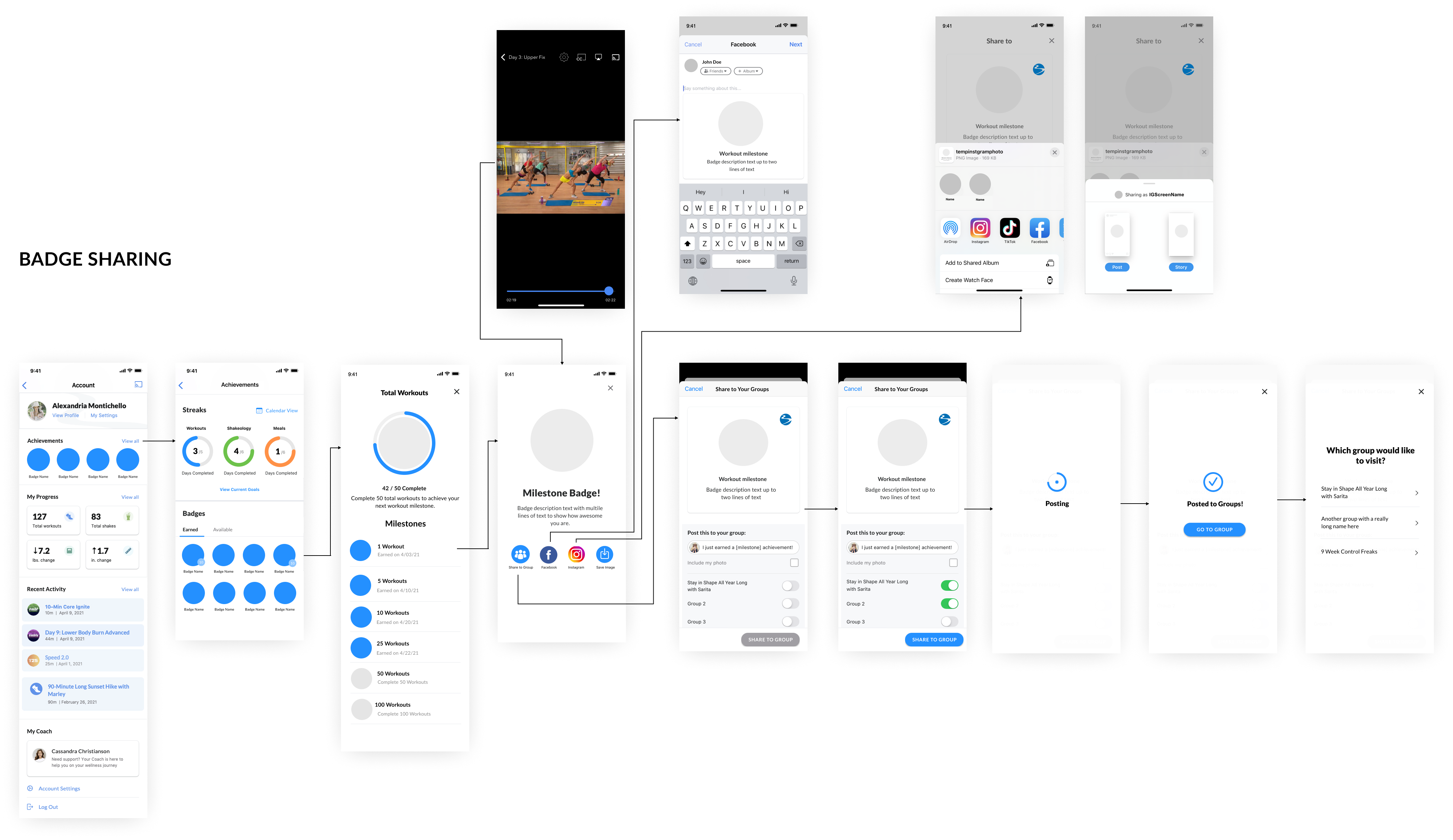
Nailing down the badge sharing flow was crucial for getting users to engage with the feature. With the help of a celebration modal that would announce when a badge was won, users would then be prompted to share that recognition with others.
User Testing
Once we had worked through the main components of the feature, we proceeded to create a functioning prototype in Figma, which we used to obtain feedback from users. This was an invaluable step in the process as it identified critical issues the team needed to address before moving ahead.
Hidden Badges
Issue
Since early stakeholder input was unwavering regarding account being the only access point to the feature, the team's concern was that this would affect discoverability for most users. Testing confirmed that finding the feature was not intuitive. Most went to other parts of the app, and many had to be told where to access it.

Solution
To optimize the feature's discoverability, we decided to create an option to place access points to badges and Streaks right on the app's homepage. For badges, it was important that the module here not be a regurgitation of what was displayed on account but a more current snapshot of progress toward a next achievement milestone. This creates more motivation for users to continue to work towards their next goal.

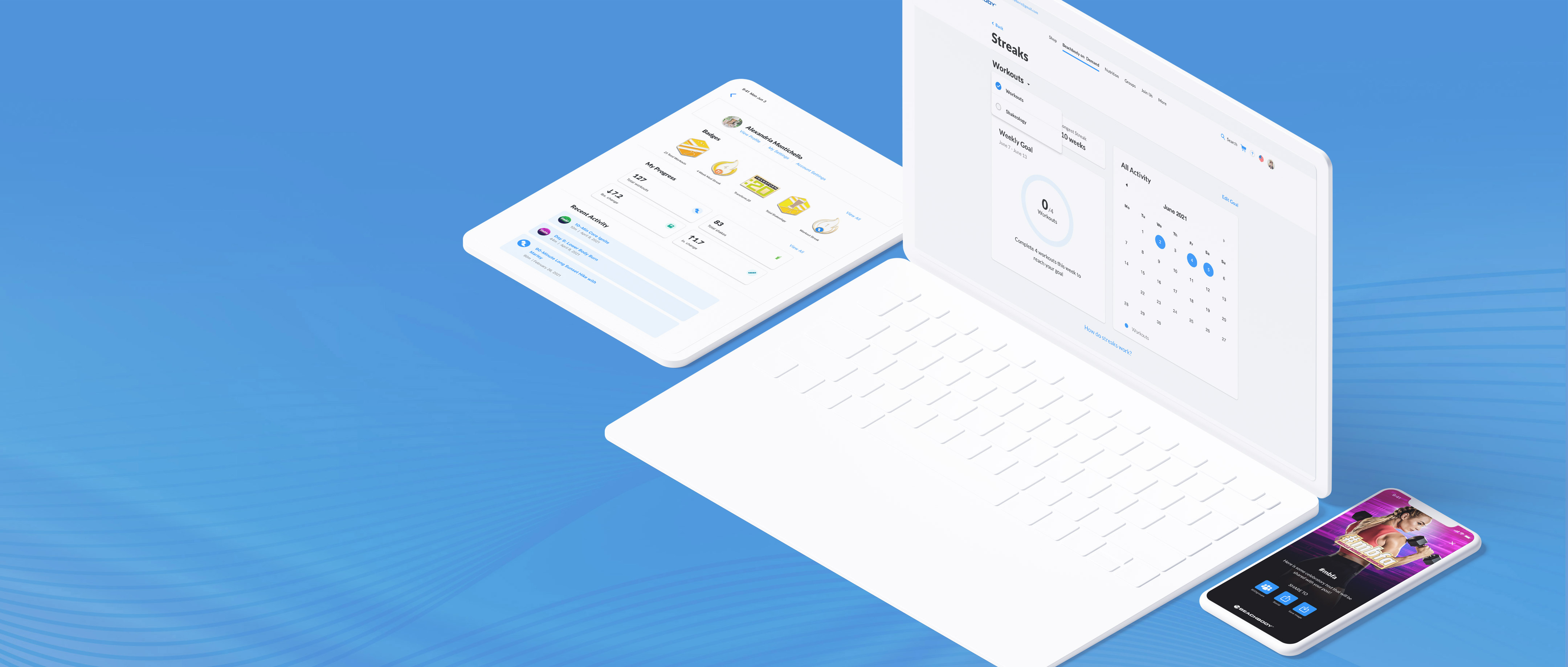
Design
Most UI elements were pulled directly from the Beachbody design system and incorporated into the features' user flows. The team was allowed some creative liberties with the design of the actual badges. A designer on the team who was more proficient with illustration took the helm on this and created a color-coded system of multiple badge types. Since a celebration modal signifies the user of an earned badge, fun and bright backgrounds were essential to making the moment feel special. I assisted in selecting backgrounds for each badge that I felt would complement it best.
Badges


Share Screens
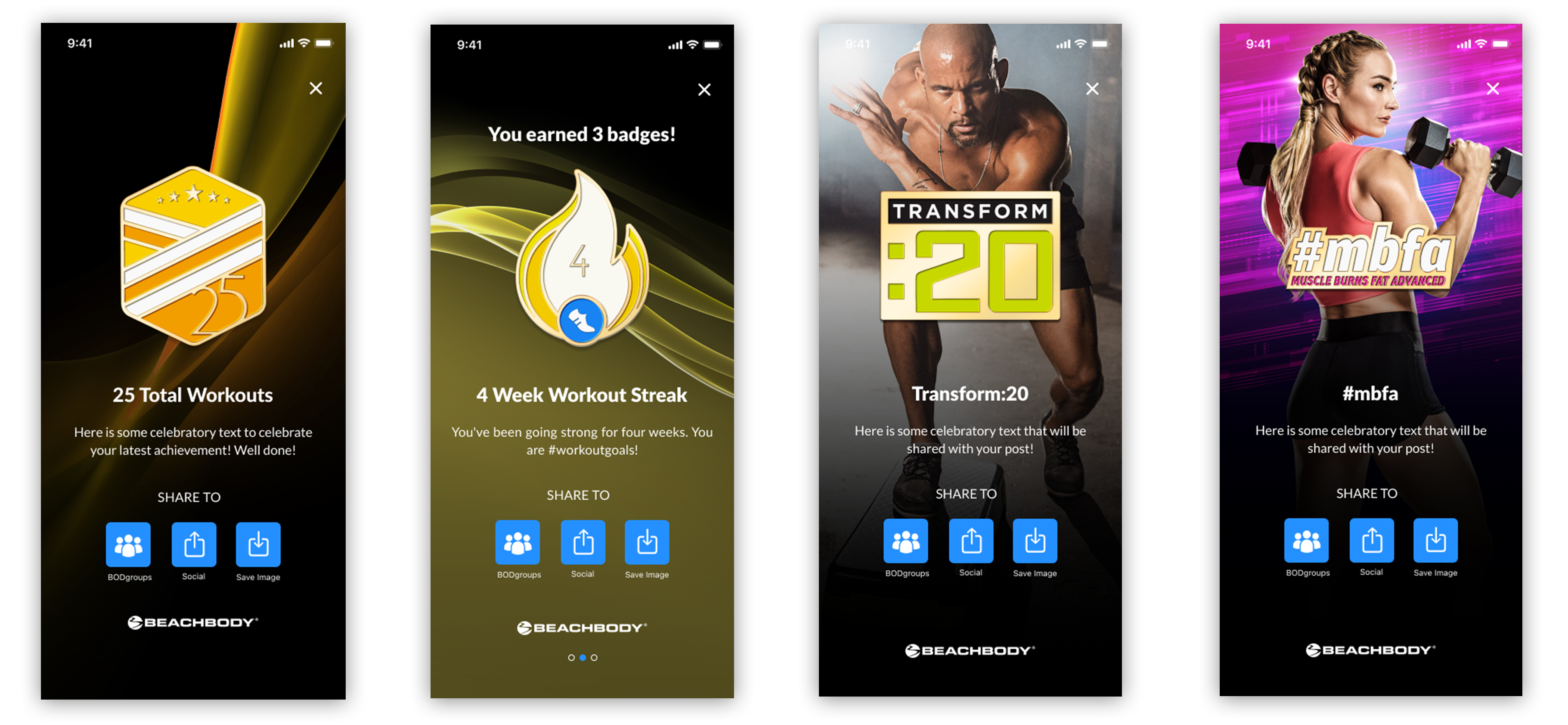
Gamfication on the Beachbody/Myx Bike
Cross-Platform Parity whether you access gamification on your phone, laptop, bike or TV, all of your progress stays up to date. The UI was reconfigured to better suit the dark, horizontal dark touchscreen bike experience.
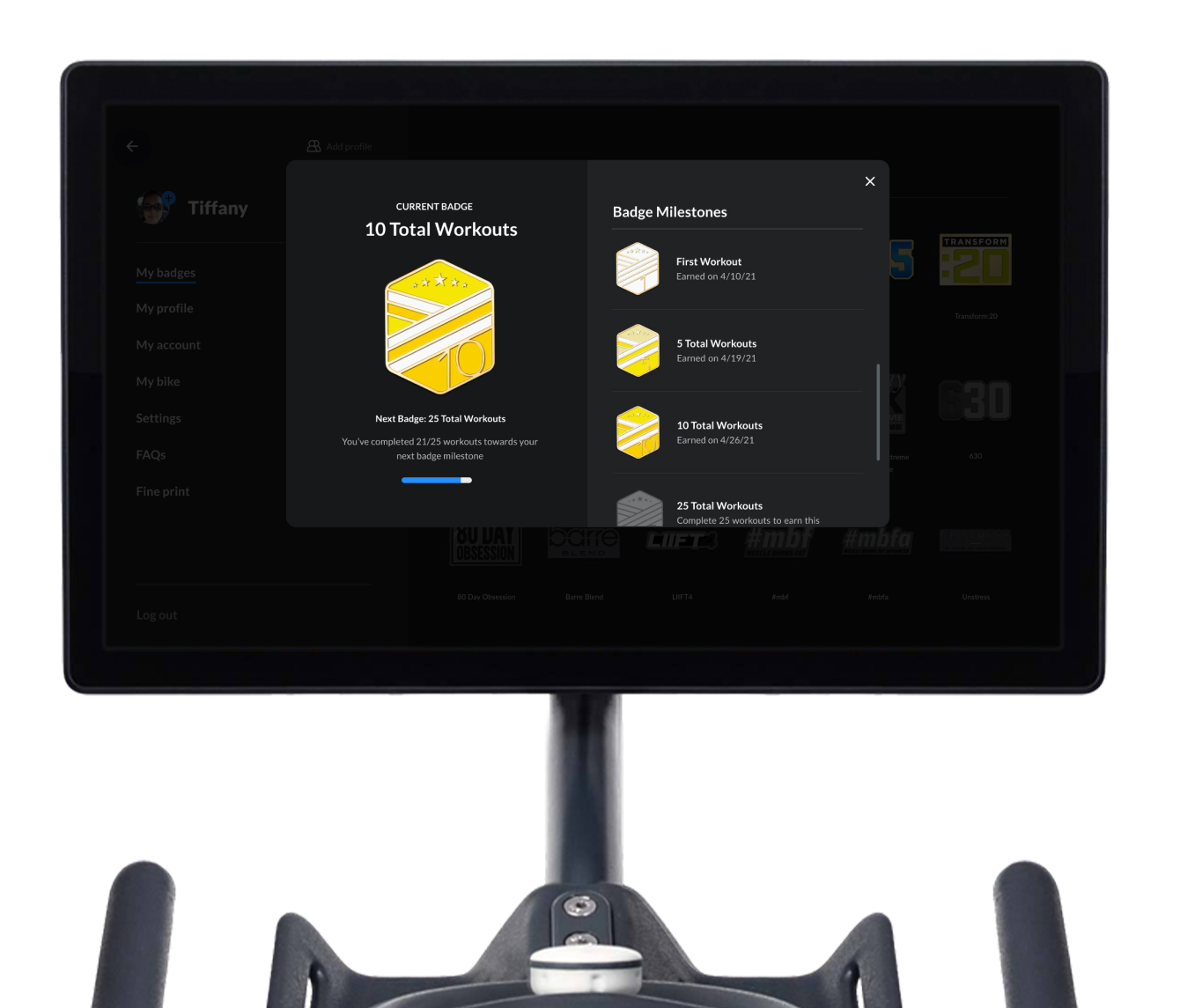
User Flows
Once an established system of badges was approved, the team could gauge if their design would impact the UI visually and adjust it accordingly. Below are some walkthroughs of the finalized components of the feature.
Feature Intro
Orients and provides the user with the necessary access point to the feature. Users have access to their “trophy case” from the account page, where they can see badges they’ve earned and ones they have yet to achieve. Also added is the ability to be notified when a badge is earned via push notifications.
Share Flow
Allows users to access the celebration modal from their “trophy case” so they can share the achievement at any time. There is also the ability to share to a BOD Group (an invitation-only group of Beachbody members with common fitness goals) or save a copy of the modal to your device.
Key Takeaways
I knew from the get-go that incorporating a gamified experience into an established brand such as Beachbody would take careful consideration in how it was implemented. Having a long research period to ascertain how gamification factors into business impact were crucial, as the company seemed to be late in the game. Through my research, I assessed and conceptualized how to integrate a gamified experience that will keep the Beachbody user engaged and excited about achieving their fitness goals.
Though there were numerous roadblocks on the road to the launch of the feature, I recognized that adaptation under challenging situations is an asset. Timelines get pushed back, feature descoping and last-minute enhancements are never easy to digest when you've worked countless hours to produce a solid feature or product. However, providing quick solutions in the interim is sometimes necessary when it comes to your stakeholders' behest.
Key metrics after launch:
- Overall increase in brand engagement.
- Users immediately started sharing their virtual badges in BODgroups and on social media.
- Within the first 7 days, we saw social sharing of 11k+ badges.
